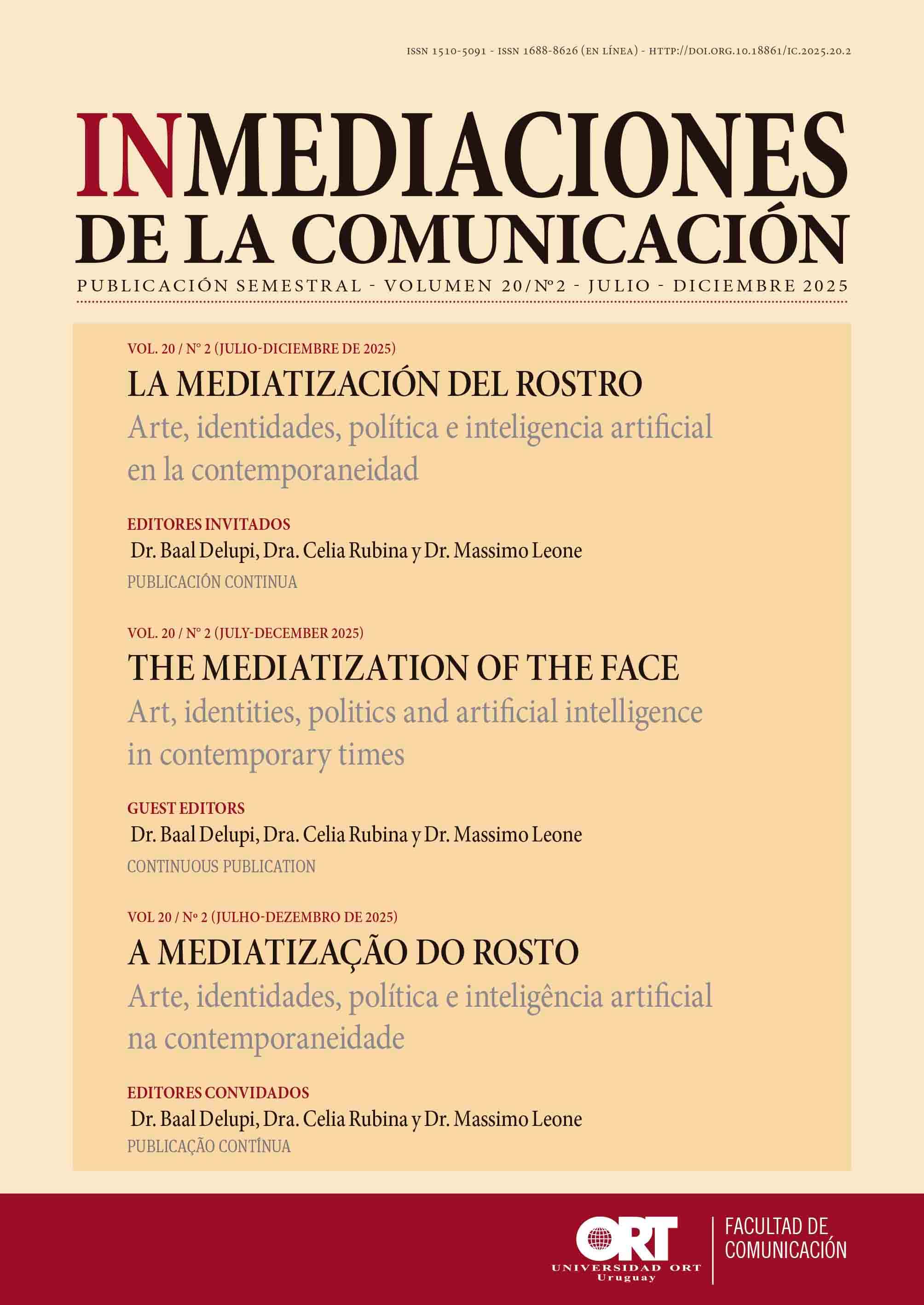Physiognomic types
Notes on a modelling of the face from cognitive semiotics
DOI:
https://doi.org/10.18861/ic.2025.20.2.4138Keywords:
modeling, physiognomic type, scheme, gaze, faceAbstract
This article seeks to establish a reflective dimension regarding the conditions and problems involved in facial modeling. To do so, it will utilize theoretical considerations from cognitive semiotics and, at the same time, illustrate the reflection by considering some relevant cases.
Specifically, this article seeks to raise specific questions regarding Kant's (2010) approach to the interpretive function of the face: for the German philosopher, the face and the gaze allow us to intuit a subject's temperament. Thus, the theoretical and methodological foundations of cognitive semiotics will be used to argue Kant's proposal and, at the same time, establish the cognitive conditions involved in facial modeling.
Downloads
References
Castoriadis, C. (2002). Figuras de lo pensable. Fondo de Cultura Económica.
Eco, U. (2007). Historia de la Fealdad. Lumen.
Eco, U. (1999). Kant y el Ornitorrinco. Lumen.
Eco, U. (2000). Tratado de semiótica general. Lumen.
Eco, U. (2020). Lector in Fabula. La cooperazione interpretativa nei testi marrativi. La nave di Teseo.
Finol, J. E. (2015). La Corposfera. Antropo-semiótica de las cartografías del cuerpo. CIESPAL.
Grupo ϻ (2015). Tratado del Signo Visual. Cátedra.
Kant, I. (2010). Antropología en Sentido Pragmático. Alianza.
Kant, I. (2007). Crítica de la Razón Pura. Taurus.
Knapp, M. (2007). La Comunicación No verbal. El cuerpo y el entorno. Paidós
Leone, M. (2021). Mala Cara: normalidad y alteridad en la percepción y en la representación del rostro humano. Revista Signa, 30(1), 191-211. https://doi.org/10.5944/signa.vol30.2021.29305
Magariños, J. A. (2008). Semiótica de los Bordes. Apuntes de metodología semiótica. Comunicarte.
Neisser, U. (1981). Procesos cognitivos y realidad. Marova
Verón, E. (1987). Cuerpo y metacuerpo en Democracia Audiovisual. Après, (293), 32-35.






